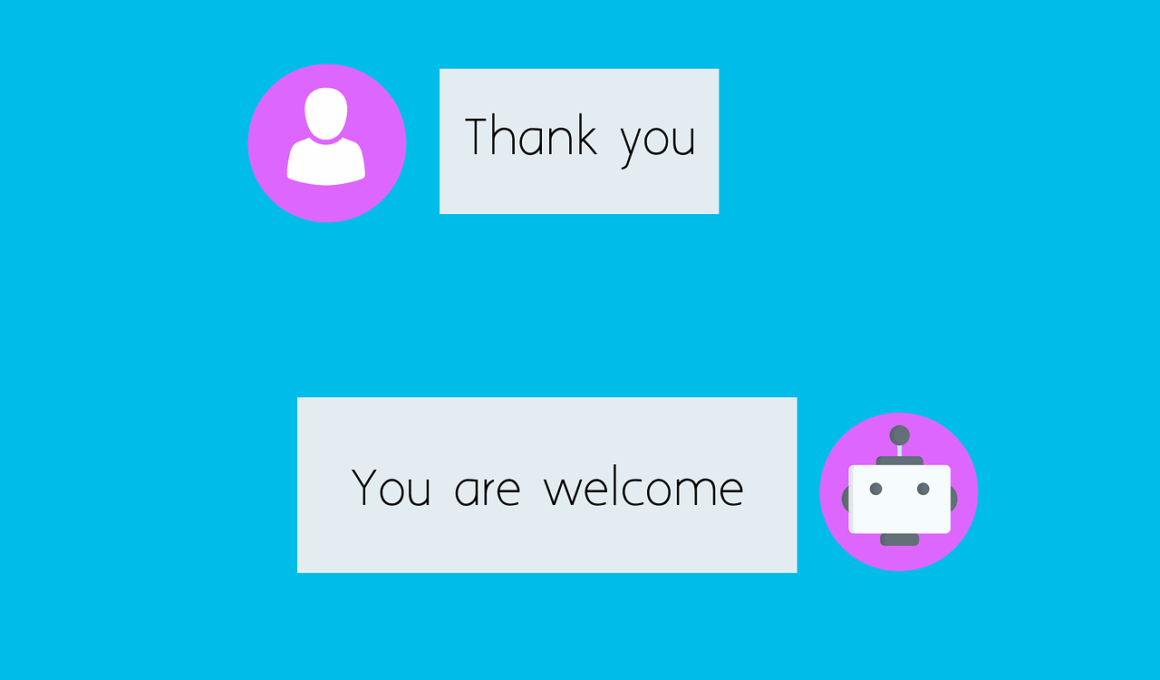Customer Service Automation Without Losing the Human Touch
The evolution of customer service has ushered in a powerful wave of automation tools promising efficiency and accessibility. However, as businesses integrate these technologies, the challenge surfaces: how do we maintain a personal touch? The core objective should revolve around enhancing customer experience while utilizing innovation. To achieve this balance, it’s essential to embrace a hybrid model that leverages both automated responses and human interactions. Automating routine inquiries can improve response time, allowing customer service representatives to focus on complex issues that truly require human empathy. By analyzing customers’ interactions and behaviors, businesses can preemptively provide solutions tailored to individual preferences, allowing automation to shine in the background. This approach also aids in finding the right blend between quick service and meaningful engagement, keeping customers happy and satisfied. Ultimately, the goal is to employ technology as a complementary asset—not a replacement. When executed correctly, automation can enhance human interaction rather than diminish it, ensuring a positive experience on both sides. Companies that strategically combine between automation and personalized service will potentially retain customers effectively while exceeding their expectations.
Consequently, training is paramount in equipping staff with tools and knowledge essential for integrating automation effectively. Continuous training and development help employees understand how to utilize these tools while preserving the customers’ genuine connection. Providing representatives with platforms that enrich customer understanding can bolster their confidence in automated systems. Furthermore, awareness of automation limits is vital; employees should know when to step in personally. This balance between technology and human touch is critical for resolving complaints and fostering loyalty. Customers appreciate brands that can seamlessly transition from bots to real people, especially for complicated issues. Organizations can enhance customer service quality by allowing staff autonomy in decision-making. This autonomy leads to personalized solutions, enhancing service and differentiation in competitive marketplaces. Additionally, obtaining continuous feedback helps refine the automation strategy, improving both customer satisfaction and operational efficiency. Thus, utilizing real-time data can enable businesses to track the effectiveness of automated responses, finely tuning them to changing consumer expectations. This responsive adjustment keeps customer relationships strong and relevant over time, creating lasting bonds and repeat business.
Leveraging Data for Enhanced Experiences
Data is an irreplaceable asset in optimizing customer service strategies, especially when integrating automation. By gathering insights from past interactions, organizations can engineer automated systems that recognize customer needs and preferences, allowing for tailored solutions delivered smoothly. Leveraging data analytics results in enhanced response accuracy, leading to improved customer satisfaction. Suggestions generated through customer profiles can inform proactive service approaches, ensuring customers feel seen and valued, thus facilitating long-lasting relationships. Furthermore, chatbots equipped with advanced data interpretation can guide customers effectively through their queries while keeping a conversational tone. Companies should remain transparent about how customer data is utilized, instilling trust in consumers that their information fuels better service, not complacency. Emphasizing the importance of customer data protection and privacy throughout service operations builds credibility and encourages engagement. By utilizing feedback loops, businesses can adjust automated systems consistently, resulting in dynamic service delivery adapting to customer needs. When successfully paired with real human representatives, automation presents personalized experiences. An unwavering commitment to privacy without sacrificing personalization will emerge as a hallmark of reputable organizations in this technological age.
Personalization derived from automation can feel more human than ever, elevating customer experience beyond standard interactions. By incorporating artificial intelligence (AI), brands can anticipate customer needs before they arise, activating tailored responses that make every interaction feel unique. Customers engage more positively with brands that remember their preferences, recommend based on past behavior, and address them by name. The emotional dynamics of communication are paramount; ensuring that automated messages resonate with customers is equally critical. Incorporating elements of empathy within automated responses helps maintain a human-like touch, aligning with genuine customer needs. Companies that leverage customer history and preferences can craft impactful narratives that foster trust and loyalty. Although automated responses handle routine inquiries efficiently, they should always link to human representatives when the situation warrants intervention. Strategies must pivot to ensure that customer satisfaction remains the focal point even during periods of automation. Regular assessments not only enhance performance but also facilitate necessary changes as customer preferences evolve, ensuring a holistic approach that marries automation with empathetic service. Tying into the automation narrative with mindfulness helps cultivate strong customer relationships, sowing seeds for future loyalty.
Redefining Customer Interactions Through Technology
The advent of new technologies reshapes customer interactions, highlighting a balance between automation and authentic engagement. Automated reminders and updates streamline communication, eliminating repetition and enhancing workflow efficiency. However, human representatives play an irreplaceable role in interpreting complex queries and managing sensitive situations. Establishing a multi-channel service platform equips customers to choose their preferred method of communication, whether it’s through messaging apps, email, or live chat. Retailers and service providers who adopt these channels increase reach and accessibility, connecting with customers wherever they are. Training employees to adeptly navigate these technologies empowers them to create personal experiences when engaging with diverse audiences. Additionally, an omnichannel approach enables continuity in customer interactions, ensuring consistency across platforms while blending automation with human touch seamlessly. Strong service quality becomes paramount when there are deviations or inconsistencies, as customers expect cohesion in their service experiences. Empowering representatives to manage omnichannel customer journeys reflects a commitment to a quality-driven service strategy, enhancing loyalty and satisfaction. By continuously monitoring these channels, businesses can also gather valuable insights and make prompt adjustments based on customer feedback, ultimately refining service delivery.
As companies scale operations, developing a supportive infrastructure for automation is essential. This infrastructure should be responsive and scalable, providing necessary adjustments as the customer base expands. Investing in technologies that enhance communication offers flexibility for both employees and customers, facilitating smoother interactions. Moreover, organizations should prioritize integrating CRMs that allow customer support teams to monitor interactions across various channels. This oversight enhances the ability to address customer concerns promptly and personally, reinforcing customer trust and loyalty. The move to scale production without losing the human touch is achieved by leveraging sophisticated algorithms designed for seamless integration. These tools enable companies to allocate resources effectively, directing customers to the right service channels. By utilizing a mix of automated systems and human oversight, companies can efficiently troubleshoot and resolve issues to maintain service integrity. Transparency throughout the automation process plays a pivotal role; keeping customers informed fosters trust and reduces anxiety regarding automated changes. Developing a robust customer support ecosystem ensures both efficiency and personalization are well-handled, ultimately shaping a successful customer-centric model and sustaining satisfaction levels.
Creating a Culture of Continuous Improvement
Promoting a culture that values continuous improvement in customer service is essential for long-term success. Regular training sessions empower staff to stay updated on new technologies, enabling them to leverage automation effectively. Establishing platforms for sharing best practices encourages collaboration across teams, fostering a united approach to customer engagement. Encouraging feedback from both customers and staff aids in honing processes progressively, highlighting areas for enhancement. This collaborative feedback system nurtures a growth mindset, leading to innovative ideas and solutions. As challenges arise in balancing automation and human engagement, organizations must remain open to re-evaluating their strategies to align with evolving customer expectations. By fostering a proactive environment that emphasizes responsiveness and adaptability, businesses reinforce their commitment to exceptional service. Additionally, engaging employees in discussions regarding necessary improvements demonstrates a genuine investment in their perspectives, which can enhance morale and create a sense of ownership. Cultivating a culture of empathy and continuous improvement not only enriches customer experiences but also turns spontaneous interactions into positive memories. Therefore, organizations focusing on sustainable enhancements will witness increased loyalty as customers recognize their genuine commitment to service excellence.
The payoff for embracing both customer service excellence and automation is significant. Utilizing a hybrid approach not only preserves the human touch but also capitalizes on the expediency automation offers. Witnessing the positive response from customers receiving personalized attention cultivates relationships that yield repeat business. Aligning technology with human engagement helps mitigate frustrations associated with automated systems that lack understanding. A proactive stance enables businesses to resolve potential issues before they escalate, fostering allegiance and trust. Businesses that enhance service delivery through strategic combinations of technology and empathy are better suited to adapt to change. The need for adapting to changing consumer dynamics is increasingly essential as they look for convenience without sacrificing quality. Consequently, organizations that prioritize ongoing training, data utilization, and a focus on continuous improvement will position themselves favorably within competitive markets. Ultimately, maintaining a balance between automation and a human-centric approach can radically transform customer interactions. This transformation elevates organizations through robust loyalty, repeated patronage, and a significant competitive edge. The conscientious integration of customer service automation with genuine human connection signals a brand’s commitment to excellence, paving the way for ongoing success.


